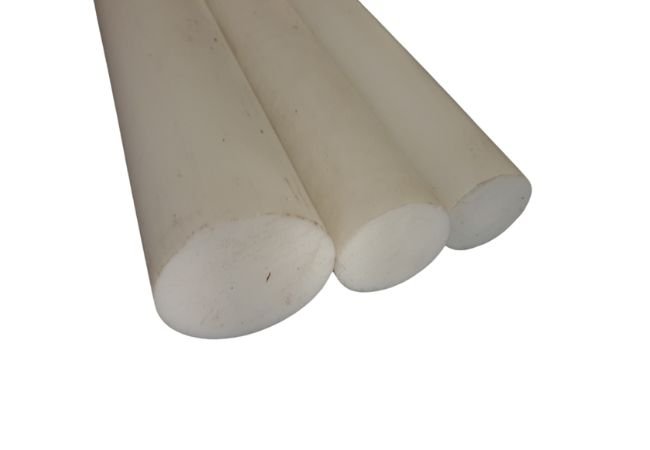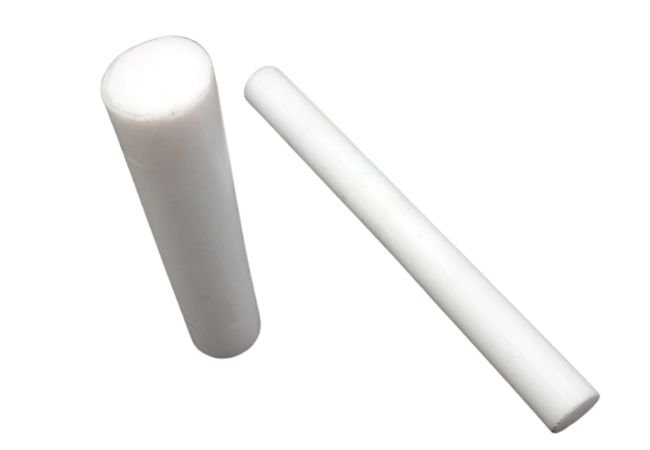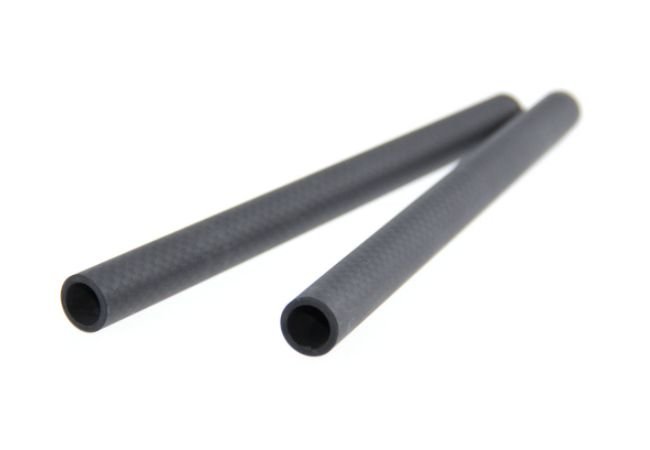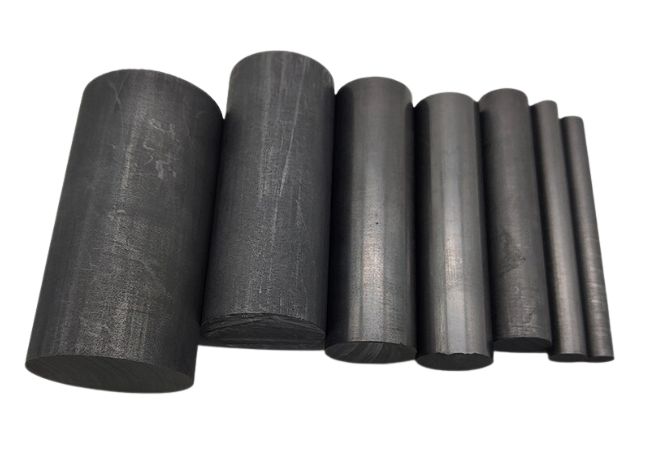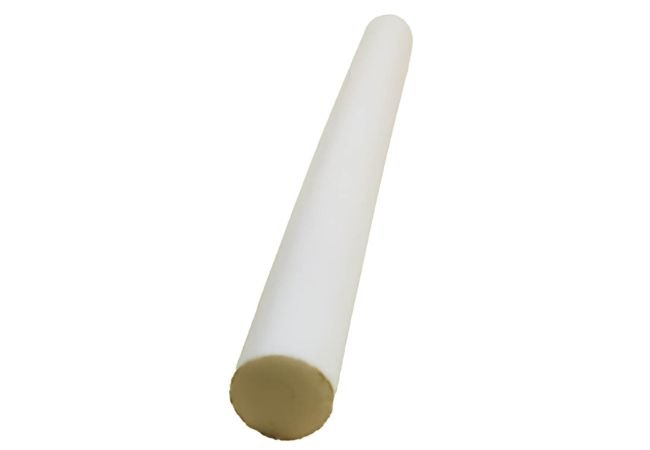PTFE Bar
PTFE bars or Teflon bars are UV-stabilized thermoplastic polymers available in a solid structure. Their cross sections come in many geometrical shapes including:
- PTFE round bar – the cross-section is circular or round
- PTFE square bar–end cross-section is square
- PTFE rectangular bar–end cross-section is rectangular
- PTFE hex bars – the end cross-section is hexagonal
In addition to these, the PTFE bar manufacturer can customize the bars according to unique specifications. However, non-standard PTFE bars tend to be more costly due to the initial tooling design.
Additionally, you may have PTFE hollow bars, PTFE coated bars, PTFE flat bars, or different PTFE bar profiles. The variations will depend on what the PTFE bar supplier can offer.
Furthermore, you can get different colors like white Teflon bars, especially for the virgin PTFE bars. Or, black PTFE bars especially for graphite-filled Teflon bars.
Properties of PTFE Bars
PTFE bars are popular for the low-friction coefficient, which partly contributes to the non-stick characteristics. Additionally, this feature makes the Teflon bars perfect for bearing and sealing applications. Adding fillers improve the friction characteristics. A good example is the graphite-filled PFTE bars.
High strength makes PTEF bars suitable for most structural applications. For this reason, the PTFE solid bar can be machined to make machine parts or instrument components. Additionally, you can add fillers to PTFE to improve mechanical properties. Examples, in this case, include carbon-filled PTFE bars, and glass-filled PTFE bars.
Teflon bars are chemically inert. These PTFE bar stocks are resistant to most chemicals. This is more evident in the virgin PTFE bars, which have excellent physical properties.
Naturally, virgin PTFE rods have excellent electrical and thermal insulation. The PTFE temperature range of -400 to +550°F makes the Teflon bars perfect for most applications. However, graphite-filled PTFE bars may have minimal thermal and electrical conductivity.
In addition to these virgin PTFE bars are FDA approved for medical and food processing industries. For suitability, they can be stabilized with certain minerals. A reason you may find mica-filled PTFE bars.
Although virgin PTFE bars are costly, there are affordable options made from mechanical grade PTFE. These are recycled PFTE.
- Performance Table
- Specification
| SPECIFIC GRAVITY: | 2.16-2.19 | g/cm3 |
| TENSILE STRENGTH: | 30±3 | Mpa |
| ELONGATION: | 350±50 | % |
| BULK DENSITY: | —— | g/l |
| HARDNESS: | 54-60 | shore D |
| FLOW-ABILITY: | —— | sec/50g |
| AVE.PARTICLE SIZE: | 25 | micron |
| SHRINKAGE: | 2.2-3.6 | % |
| PRESSURE | 350 | kg/cm2 |
| MAX SINTERING TEM. | 380 | ℃ |
| Virgin Molded bar | OD12mm–1070mm | Length:100–300mm | |
| Virgin extruded bar | OD5mm–250mm | Length:1000mm–3000mm | |
| Virgin pressed bar | OD1mm–4.5mm | Length:1000mm—100m |
Related Products
Extruded Teflon bars are still popular. This is due to the ease of extruding PTFE. However, you can also get compression-molded PTFE bars. Remember, these are two popular manufacturing processes in both PTFE rod and bar manufacturing.
There are no standard dimensions for Teflon bars. The length and cross-sectional area will depend on the PTFE bar manufacturer’s capability.




